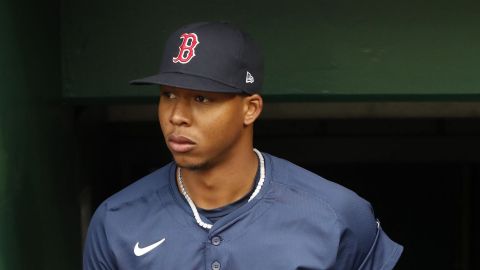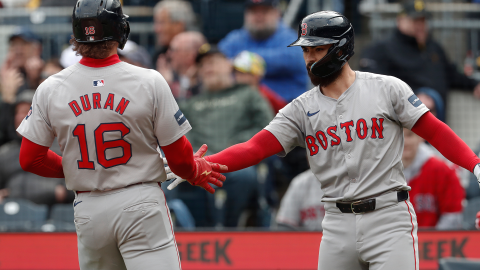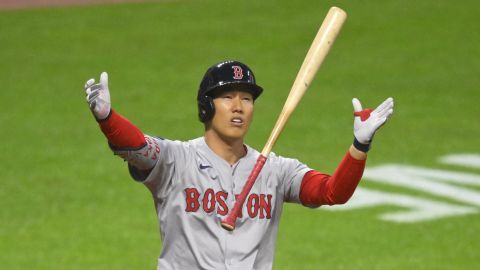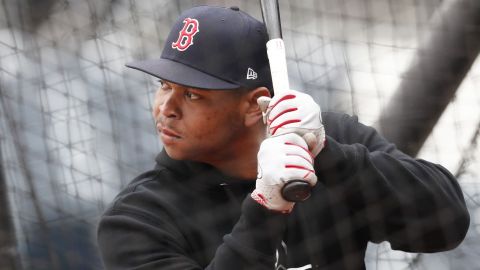Editor’s note: Each day this week, Tony Lee will examine one part of Carl Crawford’s journey to major league stardom. On Wednesday, Crawford’s performance during the Devil Rays’ dark days was covered.
Patience is often labeled a virtue. If that’s the case, then Carl Crawford will be batting third and playing left field in heaven someday.
For the better part of six years, Crawford climbed the ranks of major league outfielders on a Tampa Bay team that reached the 70-win mark just once, attaining the meager milestone in 2004, Crawford’s third year in the big leagues.
A new ownership group made a pledge to then-manager Lou Piniella that payroll would be increased and a challenge would be made to the big spenders in the division. Crawford was given that impression himself after the club inked him to a six-year extension worth $32.5 million heading into the 2005 season.
So, when few moves were made to upgrade positions around him, and the Devil Rays stumbled out of the gate, even the most pious of players had to let it out.
“I’m grateful for what they did for me but when you go out there and lose games like we did (Saturday) night and get totally embarrassed you just wish you had a little help around you,” Crawford said after an 18-2 loss in Pittsburgh on June 11, 2005, dropped the club to 20-42.
“I’m not saying nothing bad about the guys that are here, but I’m being realistic. We’re not even competitive right now. We’re not just losing games, we’re getting blown out. It’s been embarrassing right now.”
Crawford was not alone. Piniella and several other players used that loss, the seventh straight at the time, to question ownership. Their collective diatribe may have led to the upheaval that came following the 2005 campaign, which saw Tampa Bay win 67 games and finish in last place for the seventh time in eight seasons.
In came Joe Maddon to replace Piniella. Andrew Friedman was hired as the new general manager. And an organization-wide commitment was made to scouting and development, prompting the dismissal of some underperforming veterans and transforming the system from the bottom up. Holdovers such as Crawford bided their time, and welcomed a new era that, at the very least, was a bit less stressful.
“It used to be a jungle here — you were always looking over your shoulder, worried that you did something wrong,” Crawford said about the shift. “Now it’s a more relaxed environment, which is a good thing for a young team.”
With a more player-friendly environment, Crawford began to flourish, even though the wins remained hard to come by. The Devil Rays won 61 games in Maddon’s first year and 66 in his second. Crawford had his best season in that 61-win campaign, leading the American League in stolen bases (58) and triples (16) and establishing career highs in batting average (.305), home runs (18) and OPS (.830). He hit .315 and won his fourth stolen base crown the following season.
While Crawford was making himself into a star he slowly saw the fruits of the organization’s labor. By 2008, top prospects Evan Longoria and B.J. Upton were installed in the everyday lineup, and the starting rotation featured Rays product James Shields and Matt Garza, a hard-throwing youngster acquired from Minnesota in exchange for another top prospect, Delmon Young.
In an odd twist, Crawford had his first down year in 2008, when the team finally turned it around and did so in dramatic fashion, going from worst to first in the AL East and making it all the way to the World Series. The franchise cornerstone saw his average fall to .273 in 109 games, missing a great deal of time in the second half with a finger injury.
The ailment kept Crawford out of the lineup down the stretch and it was feared he would not be ready for the postseason. What a cruel fate that would’ve been for the best player in team history, the one who endured enough losses to fill an entire career, sidelined when the Rays finally made a name for themselves. Crawford wouldn’t let it happen, rallying to prepare himself just in the nick of time, and when he stepped to the plate in Game One of the ALDS against Chicago it was his first at-bat since Aug. 9.
No worries. Sixteen playoff games later, including a seven-game defeat of the Red Sox in the ALCS, Crawford had posted a .290 average with two home runs and seven steals in as many attempts.
The 2008 postseason performance seemed to serve as a reminder to those that saw a host of newcomers finish the Rays’ run to the postseason that year. Crawford had been the foundation upon which the Rays’ rise was built. He had waited for help, at times wondering when reinforcements would come. Meanwhile, his game had blossomed into one of the more dynamic in the majors. In case that reminder didn’t sink in, further proof came in a bounce-back 2009 season (.305 average, career highs with 60 steals and a .364 on-base percentage) and then a 2010 campaign that trumped them all and led Tampa Bay back to the playoffs once again.
On the day he was introduced to the Boston media in a news conference at Fenway Park, Crawford had trouble speaking due to a scratchy throat. Had one caught just a snippet of his remarks, they might have thought he was choked up. If that was the case, who could blame him?
Virtuously, Crawford had made a career out of waiting for his hard work to pay off. It took over six years in Tampa Bay. Three winning seasons were his first reward, and a massive contract from one of the game’s signature franchises the second.
Check out Friday’s final story on Crawford, focusing on his expectations in Boston.



